RE: Axial Capacity of Member 11
To pursue an answer to my own question, I found this :
which is a concrete column design/analysis program. It is limited to 5000 psi for concrete strength, however.
First off, if member 11 has only 8-#7 bars, it does not meet the minimum requirement of 1% reinforcing. I assume that is true for AASHTO also. This probably explains why member 09 has more reinf - with no PT bars, it is assumed to be in compression. With PT bars, it is assumed to be in tension, so minimum % reinf does not apply (?).
Checking member 11 I see loads of about 2050 kips design factored. I used 1.25 dead load, 1.35 live load, and a dead weight of 11 kips/ft and live load per foot of 90#X30 ft X 1.35, for a factored axial load of 2050 kips.
Using the Cornell program on-line and inputting 24"x21", 5 ksi conc, 60 ksi steel, and choice "B", Design of Column with Dimensions Assumed - it says we need 32.3 sq in reinf. The area provided by 8-#7 bars is 4.8 sq. in.
Using selection "A", Analysis of Column, same parameters, and inputting 12 - #10 bars, it shows a factored load capacity of 1556 kips.
I realize this is 5 ksi concrete and not 8.5 ksi, but that seems to be a lot more reinforcing than I see on the drawings.
Analyzing the section for 8 - #8 bars yields a capacity of only 1297 kips.
For these conditions the section is woefully under reinforced.
Can someone provide the capacity using 8.5 ksi concrete?
Finally, checking member 09 with 10-#7 bars, the program yields a factored load capacity of 1288 kips, which may work for member 09 when using 8.5 ksi concrete.
Comments?

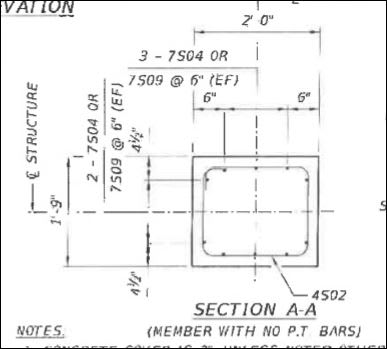
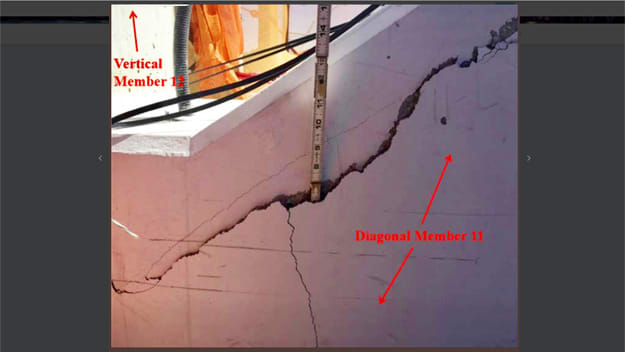
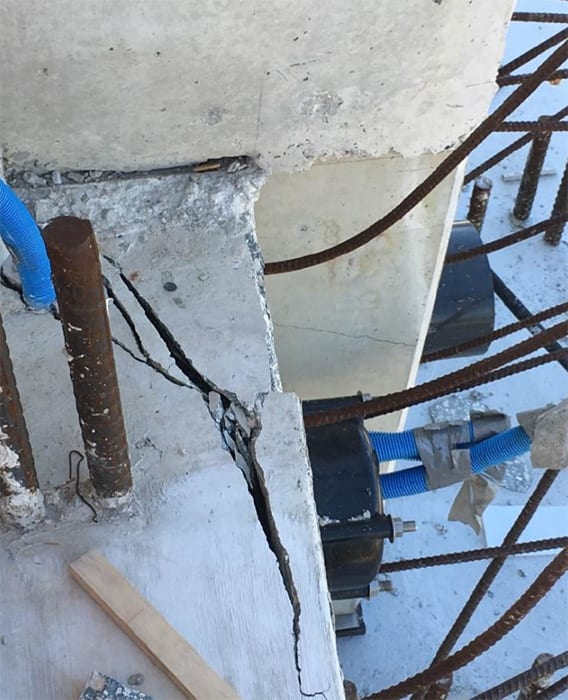
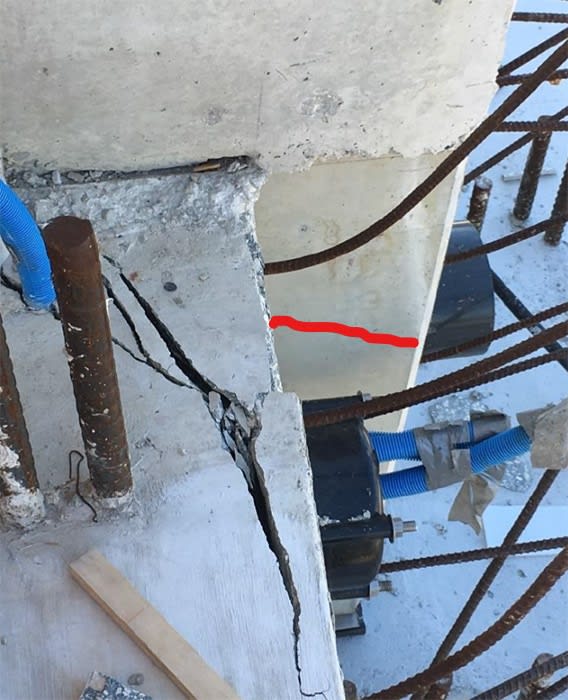
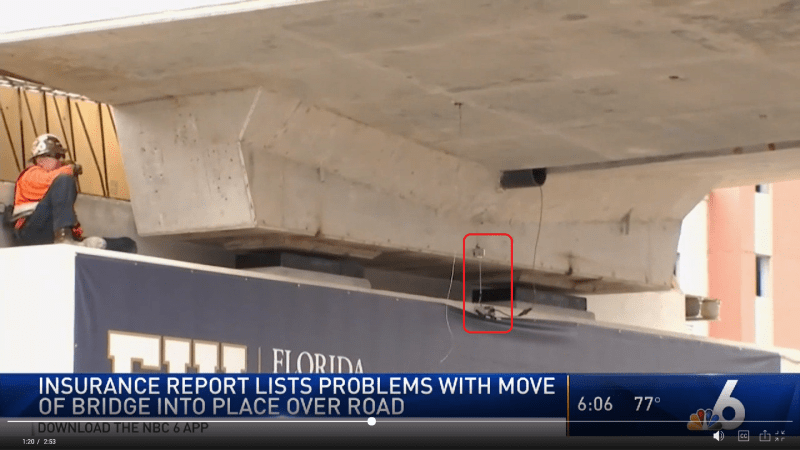
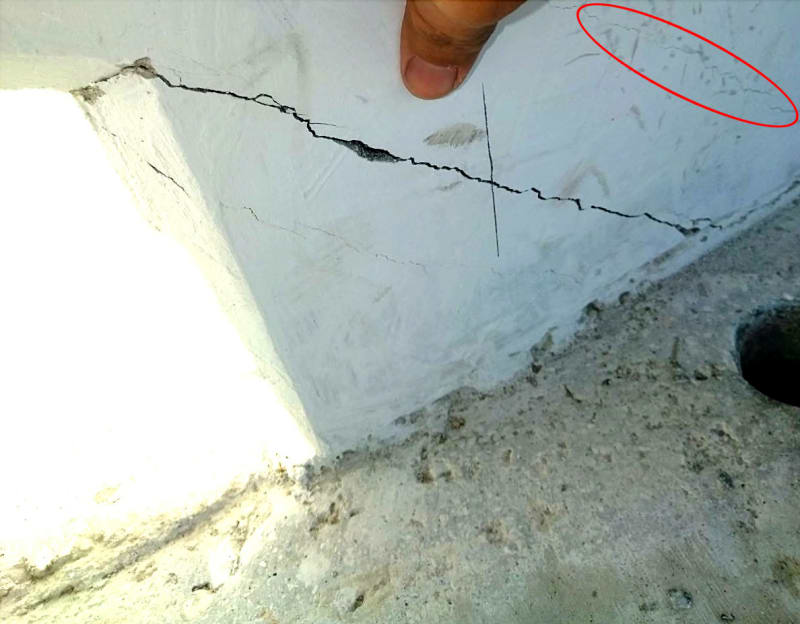
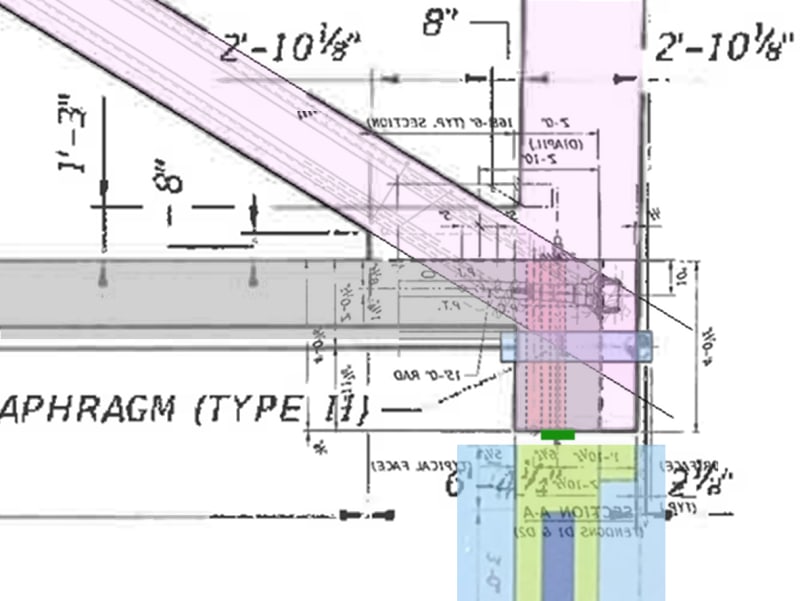

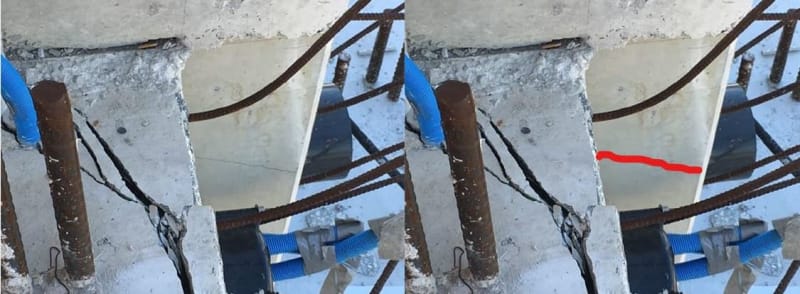
![[bigglasses] [bigglasses] [bigglasses]](/data/assets/smilies/bigglasses.gif)